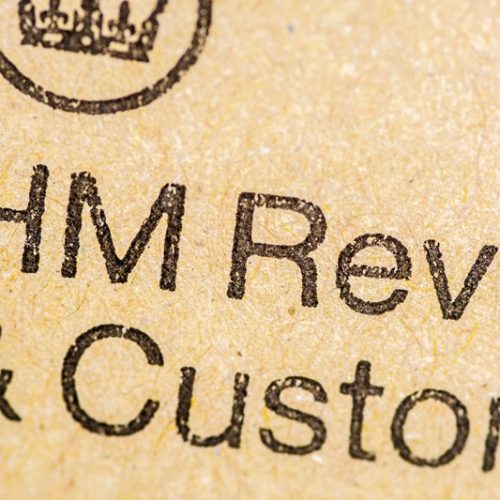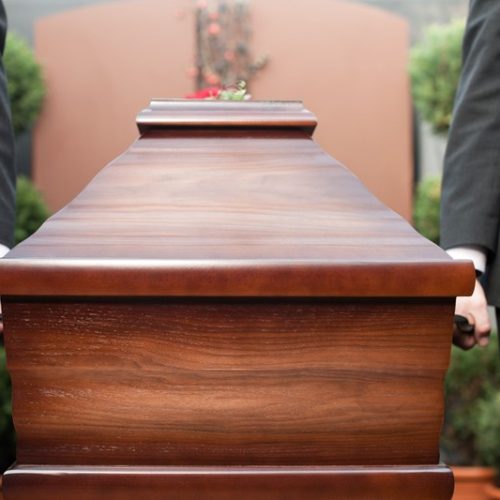

The second 2024-25 payment on account for self-assessment taxpayers is due on 31 July 2025. If you are finding it difficult to meet this tax bill, there are options available to ease the burden.
Taxpayers with liabilities of up to £30,000 can use the online Time to Pay (TTP) service to set up instalment payments. This service is available without the need for direct contact with an HMRC advisor and can be accessed up to 60 days after the payment deadline.
To be eligible for the online service, the following conditions must be met:
For those who do not qualify for the online option, alternative payment plans can be arranged. These plans are typically tailored to the individual's or business's specific financial situation, allowing repayment over an agreed period.
HMRC will generally grant extended payment terms if they believe you will be able to pay the full amount in the future. However, if HMRC determines that additional time won't resolve the issue, they may require immediate payment and take enforcement actions if the debt remains unpaid.

Since 6 April 2025, the remittance basis of taxation for non-UK domiciled individuals (non-doms) has been replaced by the Foreign Income and Gains (FIG) regime. This shift marks a significant change, as the new FIG regime is based on tax residence rather than domicile. Under the revised rules, almost all UK-resident individuals must report their foreign income and gains to HMRC, irrespective of whether they previously used the remittance basis or are now eligible for FIG relief.
For those former remittance basis users who no longer qualify for the new FIG relief, the treatment of newly arising foreign income and gains now aligns with the standard tax regime for UK residents. However, they will still be liable for tax on any pre-6 April 2025 FIG income and gains if they are remitted to the UK.
A key feature of the FIG regime is the 4-year FIG exemption for new UK residents. Individuals who have not been UK tax resident in any of the previous 10 tax years may opt to receive full tax relief on their FIG for up to four years. To claim this, individuals must submit a self-assessment return, with deadlines falling on 31 January in the second tax year following the relevant claim year.
Importantly, claims can be made selectively in any of the four years but must include quantified figures for income and gains; otherwise, tax will be due at standard rates. An individual’s ability to qualify for the 4-year FIG regime will be determined by whether they are UK resident under the Statutory Residence Test (SRT).

You may need to submit tax returns for someone who has died. As the personal representative, you are legally responsible for reporting income earned before and after death.
This person, known as the ‘personal representative’, is legally responsible for dealing with the deceased’s money, property and possessions. This includes reporting income earned both before death and income generated by the estate afterwards.
HMRC will inform the personal representative if self-assessment return is needed for the deceased. If so, they will send the necessary forms. To complete the return, the personal representative will need financial details such as:
The tax return must be sent by post to meet the deadline provided in HMRC’s letter. The personal representative can also appoint an accountant or other professional to assist in compiling the tax return.
If the estate continues to generate income (e.g., from rent or investments), the personal representative may also need to:

You must tell HMRC if you no longer need to file a tax return. Whether you have stopped trading or no longer rent out property, notifying HMRC early avoids penalties and keeps your records up to date.
If your circumstances have changed and you believe you no longer need to complete a self-assessment tax return, then it is important to notify HMRC as soon as possible. This gives HMRC time to review your request and update your records before the 31 January filing deadline. Penalties could be incurred if you do not inform HMRC in a timely manner.
You may no longer need to submit a tax return if, for example:
If you are unsure, HMRC provides an online tool to help you check if you need to submit a self-assessment return. This can be found at https://www.gov.uk/check-if-you-need-tax-return
You can notify HMRC that you no longer need to submit a tax return by signing in to your online account and completing an online form to close your self-assessment account, You can also use this form to request removal from self-assessment for a particular tax year. You will need to have your National Insurance and Unique Taxpayer Reference (UTR) numbers in order to complete the form. Alternatively, you can contact HMRC by phone or post if you are unable to use the online service.
After submitting your request, you can track its status online. HMRC will confirm in writing whether you still need to file a self-assessment tax return.

Side income over £1,000 may mean filing a tax return. HMRC is urging part-time earners to check their tax position for 2024–25, especially if they earn from casual work, renting, or crypto.
If you are earning extra income it is important to be aware of the tax implications.
The good news is there are two £1,000 tax allowances available for small amounts of miscellaneous income. The first is for property income and the second is for trading income. If you have both types of income, you can claim £1,000 for each.
These allowances cover all relevant income before expenses. If your income is under £1,000, it’s tax-free. If you earn more than £1,000, you can choose to either deduct the £1,000 allowance from your income or list your actual expenses when calculating your taxable profit.
However, if your part-time income exceeds £1,000 in a tax year, you may need to complete a self-assessment tax return. This includes gains or income received from cryptoassets. Keep in mind this only applies if you are actively trading or selling services. If you are just clearing out personal possessions by selling them, there is usually no need to worry about tax.
If you are required to submit a tax return for the 2024-25 tax year, then the deadline to submit a tax return online and pay any tax owed is 31 January 2026.

Once your income passes £100,000, your tax-free allowance starts to shrink. Between £100,000 and £125,140, the effective tax rate climbs to 60%, but smart planning can help.
If you earn over £100,000 in any tax year your personal allowance is gradually reduced by £1 for every £2 of adjusted net income over £100,000 irrespective of age. This means that any taxable receipt that takes your income over £100,000 will result in a reduction in personal tax allowances.
Your personal Income Tax allowance would therefore be reduced to zero if your adjusted net income is £125,140 or above. Your adjusted net income is your total taxable income before any personal allowances, less certain tax reliefs such as trading losses and certain charitable donations and pension contributions.
If your adjusted net income is likely to fall between £100,000 and £125,140 your £12,570 tax-free personal allowance is gradually tapered. This tapering continues until your allowance is fully withdrawn at an income level of £125,140. This effectively results in a 60% marginal tax rate on income between £100,000 and £125,140.
For example, if your adjusted net income is £110,000, you would lose £5,000 of your personal allowance. This additional £5,000 is taxed at 60% due to the combined effect of the 40% higher rate of Income Tax and the partial loss of the personal allowance.
If your income sits within this band you should consider what financial planning opportunities are available in order to avoid this personal allowance trap by trying to reduce your income below to £100,000. This can include giving gifts to charity, increasing pension contributions and participating in certain investment schemes.

From self-employment to rental income, there are many reasons you may need to file a Self-Assessment return. Know the triggers and register with HMRC by 5 October if this is your first time.
There are a number of reasons why you might need to complete a self-assessment return. This includes if you are self-employed, a company director, have an annual income over £150,000 and / or have income from savings, investment or property.
You must file a self-assessment tax return if any of the following apply to you during the tax year:
If you need to file a self-assessment return for the first time, you must inform HMRC by 5 October following the end of the tax year. For the 2025–26 tax year (which ends on 5 April 2026), the deadline to register is 5 October 2026.
HMRC has an online tool www.gov.uk/check-if-you-need-tax-return/ that can help you check if you are required to submit a self-assessment return.

You could earn up to £18,570 in tax-free savings interest in 2025–26, thanks to the personal allowance, starting rate for savings, and the Personal Savings Allowance.
If your taxable income for the 2025–26 tax year is less than £17,570, you will not pay tax on the interest you receive. This figure combines the £5,000 starting rate for savings (taxed at 0%) with the £12,570 personal allowance.
In addition, the Personal Savings Allowance (PSA) provides further tax-free savings interest: basic-rate taxpayers can earn up to £1,000 in interest tax-free, while higher-rate taxpayers can earn up to £500. Those who pay the additional rate of tax on income over £125,140 are not eligible for the PSA. This means that a basic-rate taxpayer with no other income could receive up to £18,570 in tax-free interest.
It's important to understand that if your total non-savings income exceeds £17,570, you are no longer eligible for the starting savings rate. However, if your non-savings income falls between £12,570 and £17,570, the starting rate is reduced by £1 for every £1 your income exceeds your personal allowance.
Interest earned from ISAs or premium bond winnings is not included in these thresholds and remains tax-free. Those with higher savings in tax-free accounts can continue to benefit from their applicable PSA.
Banks and building societies no longer deduct tax from interest payments automatically. If you do owe tax on savings income, you must declare it through a self-assessment tax return.
If you’ve overpaid tax on your savings interest, you can submit a claim for a refund. Claims can be backdated up to four years from the end of the current tax year. For the 2021–22 tax year, the deadline to make a claim is 5 April 2026.

If one partner in a marriage or civil partnership earns under £12,570, you could save up to £252 a year, and up to £1,260 if you backdate your Marriage Allowance claim for the past four years.
The Marriage Allowance can be claimed by married couples and civil partners where one partner does not pay tax or does not pay tax above the basic rate threshold for Income Tax (i.e., one partner must earn less than the £12,570 personal allowance for 2025-26).
If claimed, the lower-earning partner can transfer up to £1,260 of their unused personal tax-free allowance to their spouse or civil partner. The transfer can only be made if the recipient (the higher-earning partner) is taxed at the basic 20% rate, which typically means they have an income between £12,571 and £50,270. For those living in Scotland, this would usually apply to an income between £12,571 and £43,662.
By using the allowance, the lower-earning partner can transfer up to £1,260 of their unused personal allowance, which could result in an annual tax saving of up to £252 for the recipient (20% of £1,260).
If you meet the eligibility criteria and have not yet claimed the allowance, you can backdate your claim for up to four years. This could provide a total tax saving of up to £1,260 and would include the tax years 2021-22, 2022-23, 2023-24, 2024-25 and the current 2025-26 tax year. Applications for the allowance can be submitted online at GOV.UK.

Expecting lower profits 2024-25 compared to 2023-24? You can ask HMRC to reduce your 31 July 25 tax payment on account. Act early to manage cash flow. Use your online account or we can handle it for you.
Self-assessment taxpayers normally pay their income tax in three instalments each year. The first two payments on account are due on 31 January during the tax year and 31 July after the tax year ends. These are each based on 50% of the previous year’s net income tax liability.
This means that the 31 January 2025 (now passed) and upcoming 31 July 2025 payments are both based on your 2023–24 tax liability.
A final balancing payment is due on 31 January 2026, once your actual tax bill for 2024–25 has been confirmed through your submitted tax return.
If you expect your income or profits for 2024–25 to be lower than for 2023–24, you can ask HMRC to reduce your 31 July 2025 payment on account. This can be done through your HMRC online account or by submitting form SA303 by post. You must provide a reasonable estimate of your expected tax liability.
If we are your registered tax agent we can undertake this election for you.
There is no limit to how many times you can apply to adjust your payments. However, if you reduce your payments too far and underpay, HMRC may charge interest or penalties on the shortfall.
You are not required to make payments on account if:
If your taxable profits are likely to increase in 2024–25, there’s no need to notify HMRC in advance, but you should be prepared for a higher balancing payment in January 2026.